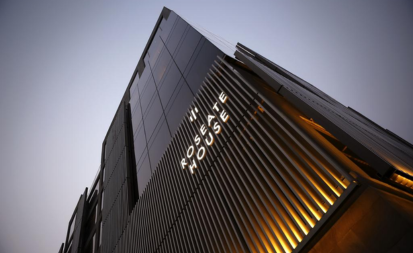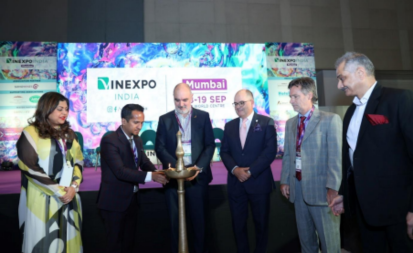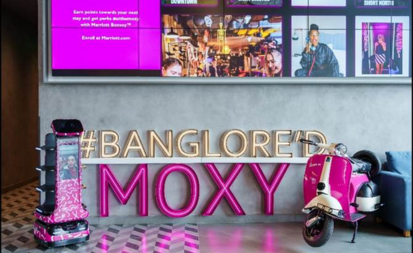Wine Tourism in India Often Includes Cultural and Culinary Elements
Dube Ameay, Outlet Manager / Beverage Manager , China House Restaurant, Grand Hyatt Mumbai Major factors behind the growth of Wine tourism in India Wine tourism in India has been steadily growing in popularity in recent years,

Dube Ameay, Outlet Manager / Beverage Manager , China House Restaurant, Grand Hyatt Mumbai
Major factors behind the growth of Wine tourism in India
Wine tourism in India has been steadily growing in popularity in recent years, driven by several key factors. These factors include:
Rising Wine Production:
India has experienced a remarkable surge in wine production, owing to the establishment of vineyards and wineries in key regions such as Nashik in Maharashtra, Karnataka, and Himachal Pradesh. These areas have played a pivotal role in the rising wine production, offering ideal climatic conditions and fertile soil that greatly contributed to this growth. As a result, there has been an exciting development in wine tourism, attracting visitors to witness the captivating winemaking process firsthand. This presents a golden opportunity for wine enthusiasts to immerse themselves in a unique and enriching experience, fostering a deeper appreciation for the art of winemaking in India.
Improved Wine Quality:
Indian winemakers have made remarkable strides in enhancing the quality of their wines, thanks to the valuable contributions of internationally recognized wine experts and consultants. Their expertise and guidance have played a pivotal role in propelling the Indian wine industry towards excellence. Through their relentless dedication and commitment, these experts have inspired winemakers to embrace innovative techniques and adopt global best practices, resulting in a significant improvement in the quality of Indian wines. As the reputation of Indian wines continues to soar, it has successfully captivated the attention of wine enthusiasts and tourists alike, who are now drawn towards the exceptional experience offered by these high-quality wines.
Scenic Vineyard Locations:
Experience the enchanting allure of India’s vineyards nestled in picturesque settings, where rolling hills and lush landscapes create breathtaking scenery. These idyllic locations offer a serene and captivating backdrop, perfect for indulging in the blissful realm of wine tourism. As a traveler seeking an experience that combines relaxation and visual splendor, our Indian vineyards provide an irresistible allure, inviting you to immerse yourself in an enchanting journey that will leave you rejuvenated and captivated. Join us in exploring these stunning destinations that promise to deliver an unforgettable and visually appealing experience.
Cultural and Culinary Experiences:
Wine is becoming more and more popular and appreciated here in India, and wine tourism is quickly emerging as a sought-after experience for travelers. Enthusiasts can indulge their senses in a journey that goes beyond the mere tasting of wines. Wine tourism in India often includes cultural and culinary elements, where visitors have the unique opportunity to not only savor the finest wines but also delight in the local cuisine that perfectly complements the flavors of the wines. This exquisite combination of food and wine experiences adds an unparalleled depth and richness to the tourist experience, ensuring that every moment spent exploring the world of wine in India is truly memorable and unforgettable.
Government Support:
The Indian government has taken proactive measures to fervently foster the growth of the wine industry and wine tourism. Recognizing the immense potential within this market, the government has been unwavering in extending its support through a range of strategic initiatives and policies. This support encompasses granting financial aid, offering subsidies, and implementing favorable regulations for wineries and vineyards. Through these efforts, the government aims to nurture a thriving and competitive wine industry, inviting both domestic and international wine enthusiasts to experience the exquisite flavors and beautiful landscapes that India has to offer.
How has the placement/ demand of wine in Hotels changed over time?
The placement and demand for wine in hotels have evolved significantly over time, influenced by changing consumer preferences, dining trends, and the global wine industry. Here are some key trends and changes that have shaped the placement and demand for wine in hotels:
Diverse Wine Lists:
Historically we offer limited wine options, often focusing on a few popular, well-known brands. Also vintage plays a vital role for wine.
Wine by the Glass:
We have increasingly adopted the practice of offering wines by the glass, allowing guests to sample different wines without committing to a full bottle.
Sommelier Services:
Many upscale hotels have employed certified sommeliers to curate their wine lists, assist guests with wine selections, and offer wine pairing recommendations.
Local and Regional Focus:
Many hotels now emphasize local and regional wines, showcasing the wines produced in the area where the hotel is located.
Sustainability and Organic Wines:
With growing interest in sustainability and organic products, hotels are increasingly featuring organic and eco-friendly wines on their lists.
Global Wine Trends:
Hotels also keep up with global wine trends, such as the popularity of natural wines, biodynamic wines, and the resurgence of classic wine regions.
Wine has become an essential part of the menu in today’s dining experience. What are the key factors in managing and serving the diners’ wine options?
Managing and serving diners’ wine options effectively is crucial for providing a satisfying dining experience. Here are key factors to consider:
Well-Trained Staff:
Having a knowledgeable and well-trained staff, including sommeliers or wine stewards, is essential.
Technology:
Use of Coravin to serve and preserve wine and wine aerator’s to aerate wine.
Wine Presentation:
Train staff on how to present wine bottles, including opening and serving wine at the table.
Wine Pairing:
Offer guidance on wine and food pairing. Create a wine pairing menu or provide recommendations from the sommelier to enhance the flavors of both the wine and the dishes.
Wine List Description:
Include detailed descriptions of each wine on the list, including grape varieties, tasting notes, and suggested food pairings.
Wine Events:
Organize wine tasting events, wine dinners, or wine-themed evenings to engage diners and educate them about different wines and wine regions.
Wine Education:
Offer opportunities for staff and diners to learn more about wine. This can include wine workshops, tastings, or wine classes conducted by experts.
Wine Promotion:
Use promotions and special offers to encourage diners to explore the wine list. This might include wine discounts, happy hours, or wine flights.
According to you, how has the wine industry evolved over time in terms of supply as well as customer demand? How has it been impactful for your brand?
Globalization of Supply:
The wine industry has seen a significant increase in globalization. Traditional wine-producing regions, such as France, Italy, and Spain, still dominate, but new regions in countries like Argentina, Chile, Australia, and New Zealand have emerged as major players. This expansion of supply has led to greater diversity in wine styles and options.
Sustainability and Organic Practices:
There is a growing emphasis on sustainable and organic practices in grape growing and winemaking
Increased Competition:
With the globalization of the wine market, brands face more competition. To stand out, brands must focus on quality, unique offerings, and effective marketing.
Education and Engagement:
Brands that invest in consumer education and engagement, whether through wine tastings, events, or educational content, can build a loyal customer base and strengthen brand loyalty.
Technology and Winemaking:
Advances in technology, from vineyard management systems to fermentation techniques, have improved wine quality and consistency. Winemakers now have better tools to monitor and control the winemaking process.
How is wine at your brand (Hotel, restaurant or airline) playing an essential role in customer experience?
Fine Dining Experience:
Fine dining restaurants have an extensive wine list. A well-curated wine list that complements the culinary offerings and elevates the overall dining experience for guests.
Wine in Room Service:
Wines are offered in-room dining services. This allows guests to enjoy wine in the comfort of their rooms, enhancing their overall stay.
Wine Events:
We organize wine tasting events, wine dinners, or themed wine nights to engage diners and educate them about different wines and wine regions.
Wine Education:
We organize external trainings for our team members to educate them about wine
Wine List Description:
Include detailed descriptions of each wine on the list, including grape varieties, tasting notes, and suggested food pairings
Wine cellars:
Each outlet have a cellar which is the USP of the outlets. It allows guest to select wine from the premium collections displayed by each outlets
—-
 English
English French
French German
German Italian
Italian




